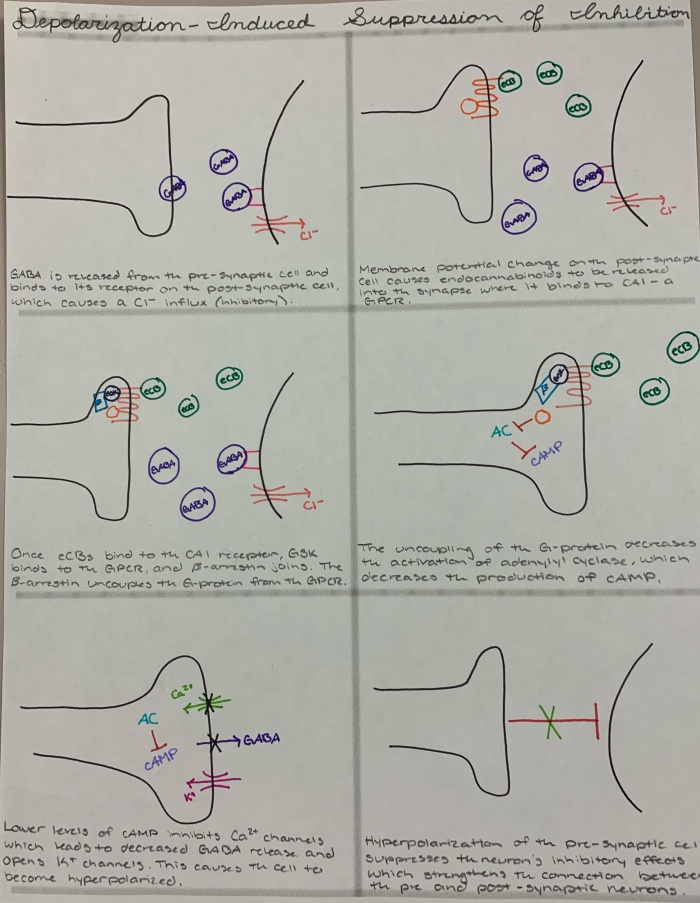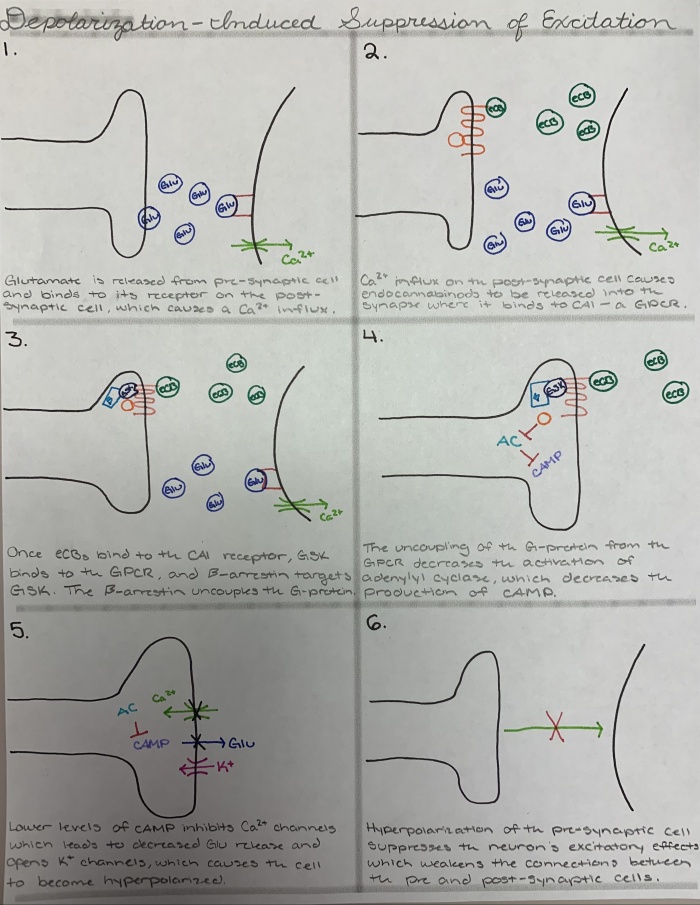Introduction to Endocannabinoids:
The endocannabinoid system is a complex biological system that helps to regulate various processes in the central nervous system. The endocannabinoid system plays a role in pain, memory, neuroprotection, and modulation of synaptic plasticity. The endocannabinoids are endogenous ligands that bind to CB1 and CB2 receptors in the brain and are produced via enzymatic degradation of naturally-occurring molecules. In English, this basically means that the endocannabinoids are produced by molecular scissors that cut off certain pieces of molecules that are already existing in the body. These newly-cut molecules then bind to the same receptors that are activated when one ingests marijuana. The endocannabinoids are responsible for regulating many things throughout the body, so I think it is important to discuss how endocannabinoid signaling works.
Endocannabinoid Signaling:
Endocannabinoids operate as retrograde messengers, meaning they mediate function on the pre-synaptic cell, rather than the post-synaptic cell. Endocannabinoid signaling begins the same way all neuronal signaling does—an action potential is sent through the neuron and a neurotransmitter is released. The neurotransmitter then binds to the post-synaptic cell, which allows for the influx of calcium into the post-synaptic cell. This is where endocannabinoid signaling differs from most other types of signaling. When calcium enters the post synaptic cell, endocannabinoids are released into the back into the synapse and bind to the CA1 and CB2 receptors (higher affinity for CA1 receptor, though). Once the endocannabinoids bind to their receptors, they can induce one of two things: depolarization-induced suppression of inhibition (DSI) or depolarization-induced suppression of excitation (DSE). The endocannabinoids induce DSE and DSI the same way, but which is induced depends on the type of pre-synaptic cell.
Depolarization-Induced Suppression of Inhibition
DSI is one result of endocannabinoid signaling. The CB1 and CB2 receptors are G-protein-coupled receptors (GCPR), which means they are associated with a G-protein. When the endocannabinoids are released from the post-synaptic cell and bind to the CB1 receptor, a complex signaling cascade occurs. The GPCR becomes a substrate for another enzyme called G-protein-coupled receptor kinases (GRK). GRKs are then targeted by beta-arrestin, which decouples the G-protein from the GPCR. Because the G-protein is uncoupled from the receptor, adenylyl cyclase is not activated, which then correlates with a decrease the levels of cyclic AMP (cAMP). The lowered levels of cAMP the inhibit calcium channels, thus decreasing the levels of neurotransmitters that are released, which opens potassium channels and causes hyperpolarization of the cell. In order for DSI to occur, the pre-synaptic cell has to be an inhibitory neuron. So, when the cell is hyperpolarized by the binding of endocannabinoids to the receptor, it suppresses the inhibitory effect of the pre-synaptic cell. This is a lot of information with a lot of acronyms, so I know it is easy to get lost. To try to help you understand DIS, I have included an image below that hopefully clears up any confusion.

Depolarization-Induced Suppression of Excitation
DSE is not much different from DSI. The exact same signal cascade occurs both DSE and DSI, so I will not go through the entire signaling cascade in words. There is a difference in which ion enters the post-synaptic cell, but this is a minor difference that doesn’t affect the rest of the cascade. The only major difference is the result of the hyperpolarization. In the DSI signaling cascade, hyperpolarization of the pre-synaptic neuron suppresses its inhibitory effects. In DSE, the endocannabinoids are acting on an excitatory pre-synaptic cell. So, when the cell becomes hyperpolarized, the excitatory effects of the pre-synaptic neuron are suppressed. A summary image of the signaling cascade is shown below.

Synaptic Plasticity:
I have discussed the signaling pathway of the endocannabinoid system so that it is easier to visualize how synaptic plasticity is modulated by the system. So, I described in detail how depolarization-induced suppression of inhibition occurs, which we can then transfer to depolarization-induced suppression of excitation. Through these two mechanisms, the endocannabinoid system modulates synaptic plasticity. DSI helps to strengthen neural pathways decreasing the amount of inhibition that pathway experiences. DSE helps to weaken neural pathways by decreasing the amount of excitation experienced by neurons in that pathway. So, DSE and DSI help to modulate synaptic plasticity by essentially doing the opposite of what those neurons usually do. In this way, endocannabinoids play an essential role in modulating synaptic plasticity within the central nervous system.